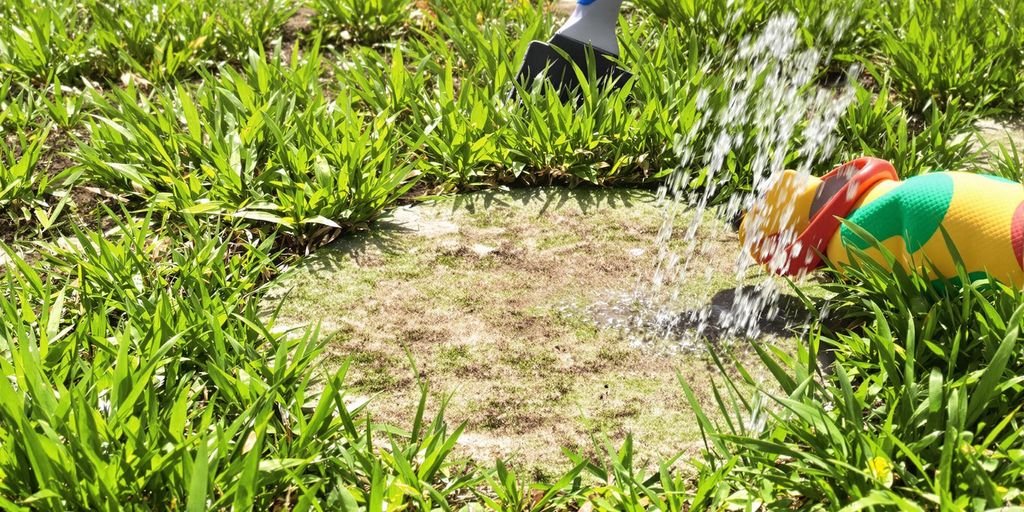
If your lawn’s looking more like a patchy desert than a lush green space, don’t worry—you’re not alone. Sacramento’s unique climate can be tough on grass, but with a little effort and the right strategies, you can bring your lawn back to life. Whether it’s the scorching summers, water restrictions, or just plain wear and tear, there are proven ways to get your grass thriving again. Let’s break it down step by step.
Key Takeaways
- Understand how Sacramento’s hot summers and droughts impact your lawn’s health.
- Pick grass types that can handle Sacramento’s dry conditions and extreme weather.
- Use smart watering techniques to save water and revive your grass effectively.
- Prepare your soil with proper testing, aeration, and fertilization for better growth.
- Keep up with regular lawn care, including weed and pest control, to maintain a healthy yard.
Understanding Sacramento’s Climate and Its Impact on Lawns
The Role of Hot Summers in Grass Health
Sacramento is known for its blazing hot summers, and these high temperatures can really stress your lawn. Grass tends to dry out quickly when the mercury rises, especially if it doesn’t get enough water. Couple that with long hours of sunlight, and your lawn might start to look patchy or even brown. To keep grass healthy during the summer, it’s important to focus on proper watering and shading techniques.
How Drought Conditions Affect Your Lawn
Droughts are a common issue in Sacramento, and they can be brutal on lawns. Without enough water, grass roots shrink, and the soil becomes compacted, making it even harder for the grass to recover. Some signs of drought stress include a bluish tint to your lawn or grass that doesn’t spring back when stepped on. Drought-tolerant grass varieties can help, but even they need some care during extended dry spells.
Why Soil Quality Matters in Sacramento
The soil in Sacramento is often clay-heavy, which means it doesn’t drain well. Poor drainage can lead to water pooling on the surface, which suffocates grass roots and encourages fungal diseases. On the flip side, compacted soil can make it hard for roots to access air and nutrients. Testing your soil regularly and amending it with organic material can help create a better environment for your lawn to thrive.
Identifying the Causes of Dead Grass in Your Lawn

Common Lawn Diseases in Sacramento
Sacramento lawns often face challenges from diseases like brown patch, dollar spot, and rust. These fungal infections thrive in the warm, dry climate and can quickly spread if not addressed. Brown patch, for example, causes circular patches of dead grass, while rust leaves an orange powdery residue on blades. To prevent these issues, it’s essential to maintain proper watering and mowing habits.
Signs of Overwatering or Underwatering
Getting the watering balance right can be tricky, but it’s crucial for keeping your lawn alive. Overwatering can lead to soggy soil, root rot, and fungal growth, while underwatering causes grass to turn brittle and brown. A simple test? Stick a screwdriver into the soil. If it slides in easily, you’re likely overwatering. If it’s tough to push in, your lawn might need more water.
The Impact of Foot Traffic on Grass
Heavy foot traffic compresses the soil, making it hard for roots to access air and nutrients. You’ll notice thinning grass or bare patches in high-use areas like pathways or play zones. To reduce damage, consider adding stepping stones or redirecting traffic. If the grass is already worn down, aerating the soil can help it recover more quickly.
If your lawn looks beyond saving, don’t panic. Sometimes what seems like dead grass is just dormant and can bounce back with the right care. For instance, sod care tips can help you figure out whether your grass is truly dead or just waiting for better conditions.
“Struggling to bring your lawn back to life? Our team of lawn care experts specializes in reviving dead grass and maintaining lush, healthy landscapes in Sacramento. Whether you need professional guidance or hands-on assistance, we’re here to help. Contact us today to learn more about our services and get your lawn looking its best!”
Choosing the Right Grass Type for Sacramento Lawns
Best Drought-Resistant Grass Varieties
Living in Sacramento means dealing with hot, dry summers, so picking a drought-resistant grass is a smart move. Some of the best options include Tall Fescue, Buffalograss, and Bermudagrass. These varieties are tough enough to handle long stretches without water while still looking green and healthy. Tall Fescue, in particular, is a favorite for its deep roots and ability to thrive in less-than-perfect conditions. If you’re unsure which one to choose, consider a blend of Kentucky Bluegrass and Tall Fescue for a balance of durability and lushness.
Cool-Season vs Warm-Season Grasses
Not all grass types are the same, and understanding the difference between cool-season and warm-season grasses can save you a lot of headaches. Cool-season grasses, like Kentucky Bluegrass, grow best in spring and fall but struggle in the heat. Warm-season varieties, such as Bermudagrass, thrive in the summer but go dormant in winter. Sacramento’s climate, with its hot summers and mild winters, often makes warm-season grasses the better choice. However, you can mix them to enjoy year-round greenery.
How to Transition to a New Grass Type
Switching to a new grass type might sound like a hassle, but it’s worth it if your current lawn isn’t cutting it. Start by removing the old grass using either a sod cutter or by solarizing the area. Next, prep the soil by aerating and adding compost to improve its quality. Once the ground is ready, spread your chosen seeds evenly and lightly rake them in. Water frequently but avoid over-saturating the soil. Remember, patience is key—new grass can take weeks to establish, but the results are worth the wait.
Watering Strategies to Revive Dead Grass
Optimal Watering Schedules for Sacramento
Reviving dead grass in Sacramento starts with understanding how much water your lawn actually needs. The region’s hot summers and occasional droughts mean water conservation is key, but so is consistency. Aim for deep, infrequent watering sessions rather than shallow, frequent ones. This encourages roots to grow deeper into the soil, making your lawn more resilient. For most lawns, watering two to three times a week is sufficient, with each session delivering about 1 to 1.5 inches of water.
If you’ve recently installed sod, it’s even more critical to stick to a schedule. Freshly laid sod needs regular watering for the first few weeks to develop a robust root system. Keep an eye on the weather, too—a rainy week might let you skip a session, saving both water and money.
Using Smart Irrigation Systems
Smart irrigation systems can be a game-changer for lawn care in Sacramento. These systems automatically adjust watering schedules based on weather conditions, soil moisture, and even the type of grass you have. They help avoid overwatering, which can drown your grass, and underwatering, which can worsen its condition. Look for systems that allow you to customize settings, so you can target specific areas of your lawn that might need more attention.
For example, if one area of your yard gets more foot traffic or sun exposure, you can program your smart system to give that section a little extra hydration. The result? Less wasted water and a much healthier lawn overall.
How to Avoid Water Waste While Reviving Grass
Watering efficiently isn’t just good for your wallet—it’s also good for the environment. Here are some practical tips to avoid wasting water while reviving your grass:
- Water early in the morning: This reduces evaporation and allows the water to soak into the soil before the day heats up.
- Check for leaks: Leaky hoses or sprinkler heads can waste gallons of water without you even realizing it.
- Use mulch around the edges: Mulch helps retain soil moisture and can reduce the amount of water your lawn needs.
Remember, every drop counts when it comes to lawn care in a drought-prone area like Sacramento. By being mindful of how and when you water, you can bring your grass back to life without breaking the bank or wasting resources.
Soil Preparation and Fertilization Tips
Testing and Amending Your Soil
Before you do anything else, start by testing your soil. You can get a basic soil testing kit at most garden stores, or send a sample to a lab for a more detailed analysis. These tests will tell you what your soil might be missing—like nitrogen, phosphorus, or potassium. If your soil is too compacted or has a pH imbalance, it’s going to be tough for grass to grow back strong. Loosening compacted soil with a core aerator can make a world of difference. And if your soil is too acidic or alkaline, consider adding lime or sulfur to balance it out.
Choosing the Right Fertilizer for Sacramento Lawns
Not all fertilizers are created equal, especially when it comes to Sacramento’s climate. Look for a fertilizer that’s high in nitrogen if you’re trying to revive dead grass. Slow-release options are great because they feed your lawn over time, instead of all at once. Organic fertilizers can also be a good choice if you’re looking to improve soil health in the long term. It’s best to fertilize in the early morning or late afternoon when the sun isn’t blazing to avoid burning your grass.
The Importance of Aeration for Grass Revival
Aeration might sound fancy, but it’s really just poking holes in your lawn to let air, water, and nutrients reach the roots. If your lawn has been trampled by foot traffic or is just plain hard-packed, aeration is a must. You can rent an aerator or even use a spiked shoe tool if you’re working with a smaller area. After aerating, it’s the perfect time to overseed or fertilize because the nutrients can sink down where they’re needed most.
Healthy soil is the foundation of any lush lawn. Take the time to get it right, and your grass will thank you.
Effective Weed and Pest Control for Lawn Recovery
Identifying Common Weeds in Sacramento
Sacramento lawns often face invaders like crabgrass, dandelions, and clover. These weeds thrive in the region’s hot summers and can quickly outcompete your grass for water and nutrients. Understanding the specific weeds in your lawn is the first step to effective control.
To manage weeds efficiently:
- Use a combination of pre-emergent and post-emergent herbicides.
- Hand-pull weeds with deep roots to prevent regrowth.
- Maintain a thick, healthy lawn to naturally crowd out potential invaders.
For tougher weeds like cogongrass, consider using specialized products such as Imazapyr, which offers long-lasting residual control.
Natural vs Chemical Pest Control Methods
Pests like grubs, aphids, and armyworms can wreak havoc on your grass. Deciding between natural and chemical pest control methods depends on your lawn’s needs and your personal preferences.
Natural options include:
- Introducing beneficial insects like ladybugs to manage aphids.
- Using neem oil or diatomaceous earth for smaller infestations.
- Encouraging birds to visit your yard by setting up feeders—they’ll eat many pests.
Chemical solutions, on the other hand, provide faster results but may require careful application to avoid harming beneficial organisms. Always follow label instructions to ensure safety.
How to Prevent Future Infestations
Keeping pests and weeds at bay is easier with a proactive approach. Here’s how you can prevent future problems:
- Regularly inspect your lawn for early signs of trouble.
- Aerate and fertilize your soil to promote strong grass growth.
- Water deeply but less frequently to discourage shallow-rooted weeds.
- Rotate pest control methods to prevent resistance.
A little effort in prevention can save you from bigger headaches down the road. Healthy grass is your best defense against weeds and pests.
Reseeding and Overseeding Techniques for Dead Grass

When to Reseed Your Lawn in Sacramento
Timing is everything when it comes to reseeding a lawn in Sacramento. The best periods are early fall and late spring, as the weather is mild and the soil retains moisture. Avoid reseeding during the peak of summer, as the intense heat can dry out seeds before they germinate. Keep an eye on the forecast—aim to seed just before a light rain to help with natural watering.
Step-by-Step Guide to Overseeding
Overseeding is a lifesaver when your lawn looks patchy but isn’t entirely dead. Here’s how to do it right:
- Prep the Lawn – Mow your grass short and remove any debris like leaves or dead grass. This helps the seeds make direct contact with the soil.
- Aerate the Soil – Use a core aerator to punch small holes into the ground. This improves soil aeration and allows seeds to settle in.
- Spread the Seeds – Use a broadcast spreader for even distribution. Make sure to choose a high-quality seed mix that matches your existing grass type.
- Water Regularly – Keep the soil moist but not waterlogged. Water lightly every day until the seeds germinate.
- Apply Starter Fertilizer – A starter fertilizer gives the new grass the nutrients it needs to grow strong and healthy.
Choosing the Right Seed Mix for Your Lawn
Picking the right grass seed is crucial for success. In Sacramento, drought-resistant varieties like Bermuda or Zoysia perform well. Cool-season grasses like fescue can also be a good option for shaded areas. Look for seed mixes labeled for “high traffic” if your lawn sees a lot of activity. If you’re reseeding after a weed issue, consider treating the area with a glyphosate herbicide like Round Up to clear out unwanted plants before seeding.
Overseeding and reseeding can transform a struggling lawn into a lush, green oasis, but patience and consistency are key. Stick to a proper schedule, and you’ll see results over time.
Maintaining a Healthy Lawn After Revival
Setting Up a Seasonal Lawn Care Schedule
Keeping your lawn healthy year-round means having a solid plan for each season. Consistency is key. Start by dividing your lawn care tasks by season:
- Spring: Focus on fertilizing and reseeding any thin areas. This is also a good time to aerate the soil if needed.
- Summer: Water deeply but less frequently to encourage strong roots. Mow regularly, but don’t cut the grass too short.
- Fall: Remove leaves promptly, overseed if necessary, and apply a winterizing fertilizer.
- Winter: Keep foot traffic to a minimum to avoid compacting the soil and damaging dormant grass.
A well-planned schedule helps your lawn thrive no matter the time of year.
The Role of Mulching in Lawn Health
Mulching is like giving your lawn a protective blanket. When you mow, leave the grass clippings behind—they act as a natural fertilizer. Alternatively, you can spread a light layer of compost or wood chips around trees and garden beds. This keeps the soil moist, reduces weeds, and improves overall soil quality.
How to Monitor and Adjust Lawn Care Practices
No two lawns are exactly alike, so it’s important to keep an eye on how yours responds to care. Check for signs of overwatering, like yellowing grass, or underwatering, such as dry, brittle blades. Adjust your watering schedule as needed. Test your soil every couple of years to ensure it has the right nutrients. If you notice weeds or pests becoming a problem, address them promptly to avoid further damage.
A healthy lawn is all about balance—water, nutrients, and care all working together. When you notice an issue, tackle it early to keep things on track.
Wrapping It Up
Bringing your lawn back to life in Sacramento might feel like a big job, but it’s totally doable if you stick with it. Start with the basics—water, soil, and sunlight—and work your way up from there. Remember, grass doesn’t bounce back overnight, so give it some time and patience. Whether it’s fixing the soil, reseeding, or just keeping up with regular care, every little step makes a difference. Before you know it, you’ll be looking out at a green, healthy lawn that you can actually be proud of. So roll up your sleeves and get to it—your yard’s waiting!
Frequently Asked Questions
Why is my grass turning brown during the summer?
Hot summers in Sacramento can cause grass to dry out, especially if it’s not watered properly or if the soil quality is poor.
How often should I water my lawn to bring it back to life?
It depends on the grass type and weather, but usually 2-3 times a week is a good start. Make sure the water soaks deep into the soil.
What type of grass grows best in Sacramento’s climate?
Drought-resistant grass types like Bermuda or Buffalo grass are great choices for Sacramento’s hot and dry conditions.
How can I tell if my lawn has a disease?
Look for signs like yellow or brown patches, unusual spots on the grass, or areas that look thin and unhealthy.
When is the best time to reseed my lawn in Sacramento?
Fall is usually the best time to reseed because the cooler weather helps seeds grow without drying out too quickly.
Do I need to fertilize my lawn regularly?
Yes, fertilizing every 6-8 weeks during the growing season can help your lawn stay healthy and green.
“Want a greener, healthier lawn? Call us now for expert advice and professional lawn care solutions tailored to Sacramento’s unique climate!”

